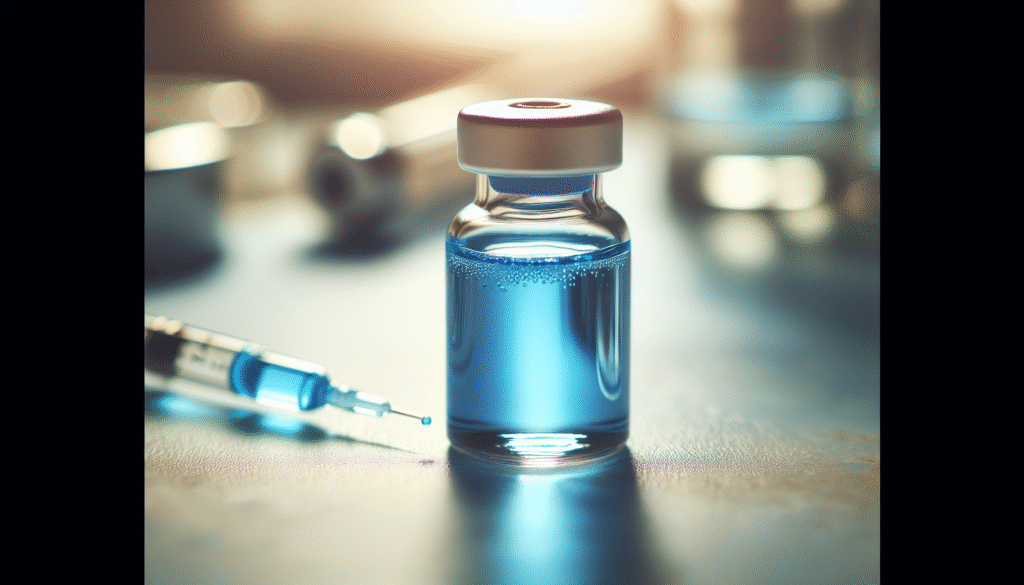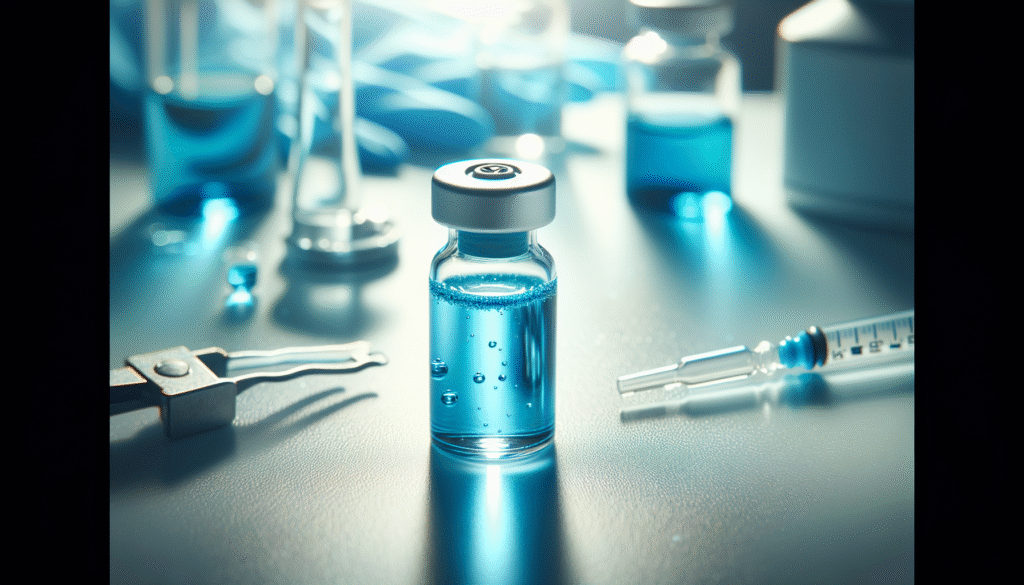
Have you ever wondered how to safely incorporate methylene blue into your health or research routines? This vibrant blue compound has garnered attention in various fields, from medicine to aquaculture, due to its unique properties. Understanding its applications, benefits, and safety precautions is crucial for effective use.
Introduction to Methylene Blue
Methylene blue, a synthetic dye, has been utilized for over a century in numerous applications. Initially developed as a textile dye, it has found a reliable foothold in the medical and research domains. Its chemical formula, C16H18ClN3S, describes its structure, while its role as a redox dye and antimalarial agent provide an insight into its multifaceted applications.
Methylene blue is not only acclaimed for its dyeing properties but has also emerged as a potential treatment for various health conditions, including methemoglobinemia—a blood disorder. As you consider incorporating this compound into your regimen, understanding its benefits and safe usage protocols is essential.
Why Methylene Blue?
Diverse Applications of Methylene Blue
Methylene blue has several applications that span multiple disciplines. It is critical to understand these uses to appreciate why you might consider it in your own practices.
| Application | Description |
|---|---|
| Medical Use | Treatment for methemoglobinemia, potential neuroprotective effects. |
| Laboratory Use | Staining agent in microscopy, biochemical assays. |
| Aquaculture | Antimicrobial properties, treatment for fish diseases. |
| Photodynamic Therapy | Potential treatment for certain cancers. |
Each application demonstrates the compound’s versatility, but it is crucial to approach its usage safely.
Benefits of Methylene Blue
Several benefits arise from the use of methylene blue, especially in scientific and health contexts. Its unique qualities enable various positive effects:
-
Antimicrobial Properties: Methylene blue exhibits potent antimicrobial effects, making it a popular agent in both medical and aquaculture settings to combat infections.
-
Cognitive Enhancements: Some studies suggest that methylene blue may improve memory and cognitive function due to its influence on mitochondrial activity.
-
Methemoglobinemia Treatment: It serves as an effective treatment for methemoglobinemia, as it can convert methemoglobin back to hemoglobin, thus restoring oxygen transport in the blood.
-
Photodynamic Therapy: Methylene blue can be activated by light to produce reactive oxygen species, making it useful in certain treatments for localized cancers.
As you absorb this information, keeping in mind these benefits will help you determine whether methylene blue aligns with your health or research objectives.

Understanding the Risks
Safety Considerations
Despite its benefits, methylene blue comes with potential risks that warrant attention. Awareness of these risks is vital to ensuring safe and responsible use.
-
Dosage: Taking too much methylene blue can lead to adverse effects, including gastrointestinal disturbances, headaches, and dizziness. Always start with the lowest effective dose.
-
Drug Interactions: Methylene blue can interact with various medications, particularly those affecting serotonin levels, leading to a potentially dangerous condition called serotonin syndrome. Consult your healthcare provider before combining treatments.
-
Allergic Reactions: Some individuals may have allergies to methylene blue. Symptoms can include skin rashes, itching, and difficulty breathing. If you experience these, seek medical attention immediately.
-
Pregnancy and Breastfeeding: The effects of methylene blue on pregnant or breastfeeding individuals are not fully understood. Caution is advised, and it’s often recommended to avoid its use in these contexts.
Understanding these risks can make you a more informed user, allowing you to approach methylene blue with care and consideration.
Recommended Dosages
Methylene blue’s dosage will vary depending on the application and individual circumstances. The following table summarizes common uses and recommended dosage guidelines:
| Application | Recommended Dosage |
|---|---|
| Methemoglobinemia | 1-2 mg/kg IV, single dose. |
| Cognitive enhancement (supplementation) | 0.5-4 mg daily, but consult a professional. |
| Laboratory staining | Dilute 0.1-1% solution, depending on use. |
It is essential to adhere strictly to these guidelines, adjusting based on personal health conditions and consulting with a healthcare professional when necessary.
How to Use Methylene Blue Safely
Medical Usage
If you are considering methylene blue for medical purposes, particularly for the treatment of methemoglobinemia, it is imperative to consult with a healthcare professional. The following steps provide a general approach:
-
Obtain Professional Guidance: Before using methylene blue, have a thorough discussion with your healthcare provider. This ensures that it is appropriate for your specific situation.
-
Understand the Administration: Methylene blue is typically administered intravenously for medical conditions. If you are prescribed this, a professional should oversee the process to monitor for adverse reactions.
-
Monitor for Side Effects: After administration, be aware of potential side effects and notify your healthcare provider if you experience anything unusual.
-
Follow-Up: Schedule follow-up appointments to track your progress and evaluate the treatment’s effectiveness.
Taking a structured approach can help mitigate risks and maximize the benefits related to medical usage.
DIY Applications
If you are considering methylene blue for self-directed applications, it is essential to approach it with an experimental mindset that prioritizes safety:
-
Start Small: Begin with a lower dosage, gradually adjusting as needed. Monitor your body’s response closely.
-
Choose Quality Sources: Ensure that any methylene blue you acquire is of high purity and quality, especially if you are sourcing it for personal use.
-
Storage: Store methylene blue in a cool, dark place to preserve its efficacy. High temperatures and direct light can degrade the compound.
-
Adhere to Best Practices: When using methylene blue, apply any necessary safety precautions, such as wearing gloves during handling to avoid staining your skin and using protective eyewear if engaging in mixing solutions.
Taking these steps prepares you for a successful and safe experience with this compound.
Laboratory and Research Uses
If your interest in methylene blue stems from laboratory or research applications, follow these structured methodologies:
-
Prepare Solutions Properly: When making dilute solutions, measure your methylene blue precisely to ensure accurate concentrations.
-
Use Appropriate Protective Gear: Always wear gloves, goggles, and lab coats to protect yourself from spills and stains.
-
Follow Protocols: Stick to established lab protocols for the use of methylene blue in staining or various assays. This helps maintain consistent results and safety.
-
Dispose Properly: After using methylene blue, learn and adhere to local guidelines for proper disposal of chemical waste to minimize environmental impact.
Such adherence is critical to the integrity of your work and your safety.

Alternatives to Methylene Blue
When to Consider Alternatives
While methylene blue boasts various benefits, certain scenarios may prompt you to consider alternatives. Recognizing when to pivot is crucial for effective practices.
-
Specific Health Concerns: If you have a condition that contraindicates the use of methylene blue or poses similar risks, look into other options.
-
Sensitivity to Dye: If you find that dyes cause skin reactions or other issues, alternative treatment approaches may suit you better.
-
Costs and Accessibility: If methylene blue is not readily available or too costly, identify substitutes that can provide similar benefits.
Alternative Compounds
A variety of alternatives may serve similar functions across applications:
| Application | Alternative Compounds |
|---|---|
| Antimicrobial | Silver sulfadiazine, Chlorhexidine gel. |
| Staining | Crystal violet, Safranin. |
| Cognitive Support | Rhodiola Rosea, Lion’s Mane Mushroom. |
While alternatives may not provide the exact same benefits, they can often serve as viable substitutes depending on the specific needs you have.
Conclusion
Incorporating methylene blue into your health or research regimen necessitates a clear understanding of its benefits, risks, and safe usage practices. This powerful compound offers numerous advantages, from treating medical conditions to facilitating scientific inquiries. However, it is the responsibility of the user to navigate its complexities with care.
If you move forward with methylene blue, always prioritize safety by consulting healthcare professionals, adhering to recommended dosages, and remaining aware of the potential risks and side effects. Through comprehensive understanding and diligent practice, you can harness the potential of methylene blue while ensuring your health and well-being.
Final Thoughts
As you consider your journey with methylene blue, remember that knowledge is your most important tool. Whether for personal health or research purposes, being informed and taking a cautious approach can empower you to make the most of this intriguing compound. Always maintain a dialogue with health professionals and stay updated on the latest evidence regarding its use to safeguard your choices moving forward.